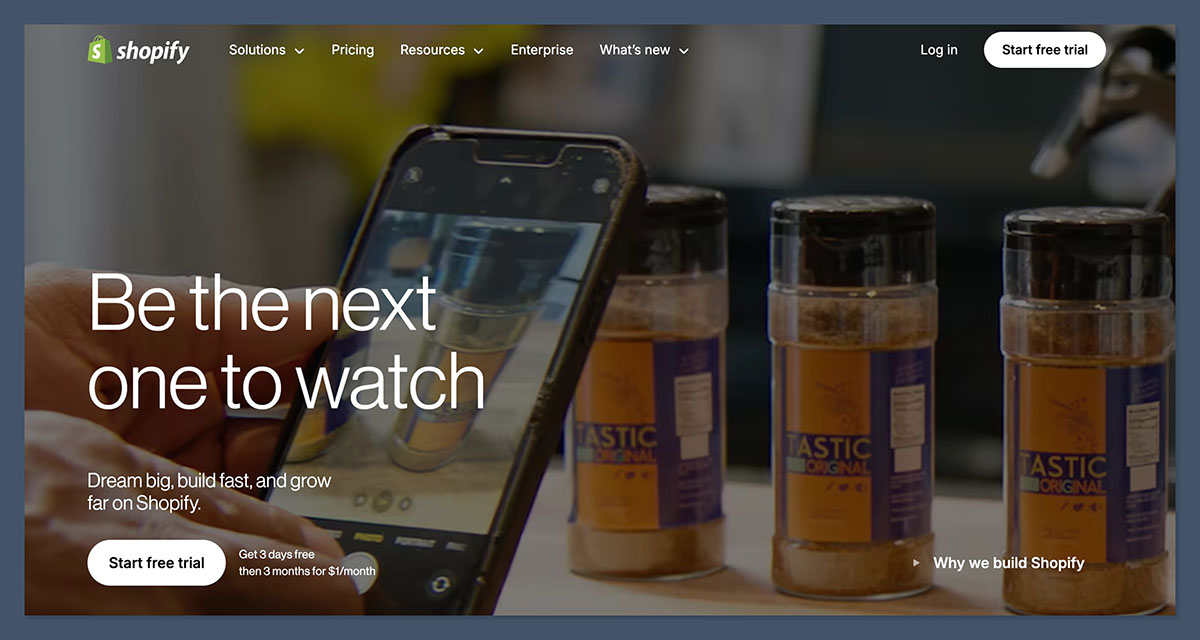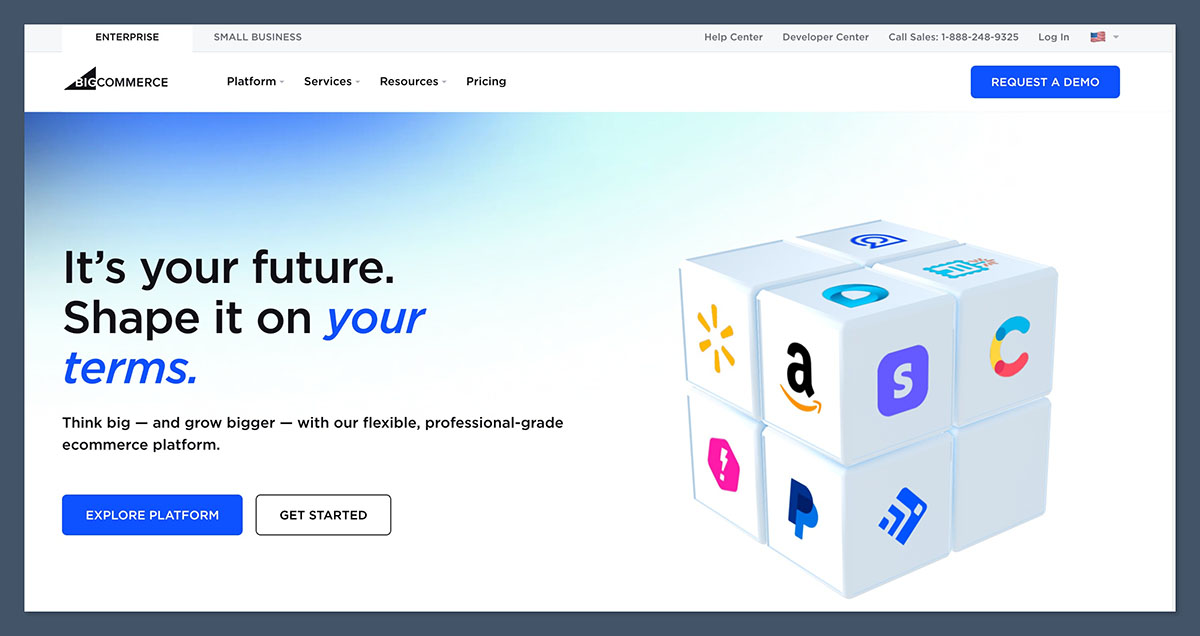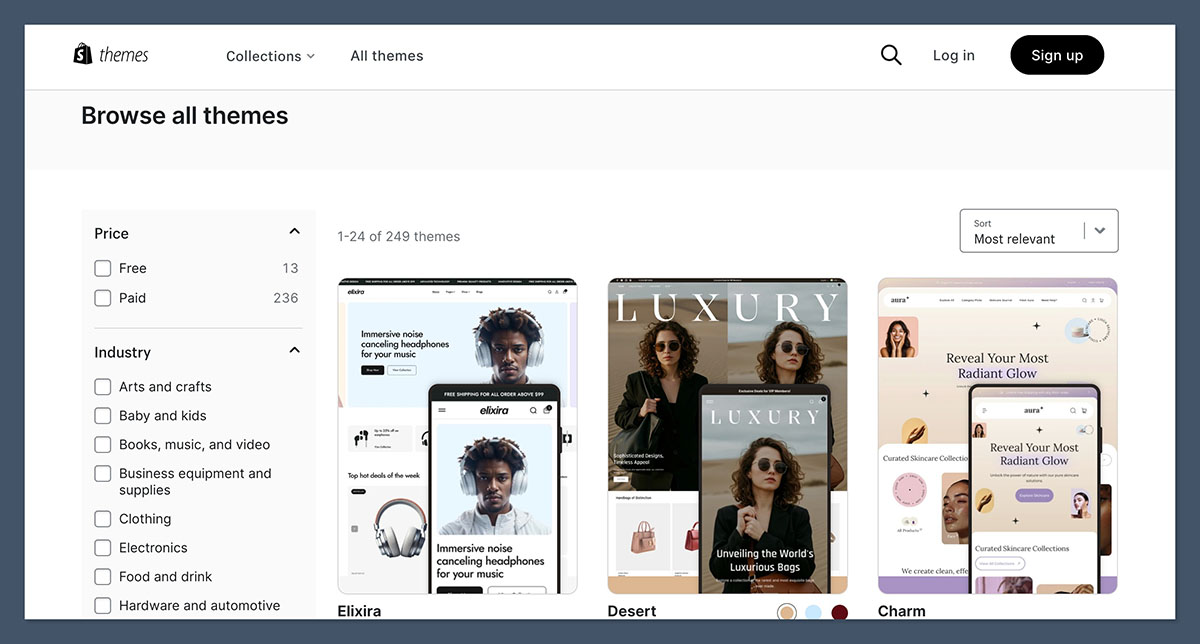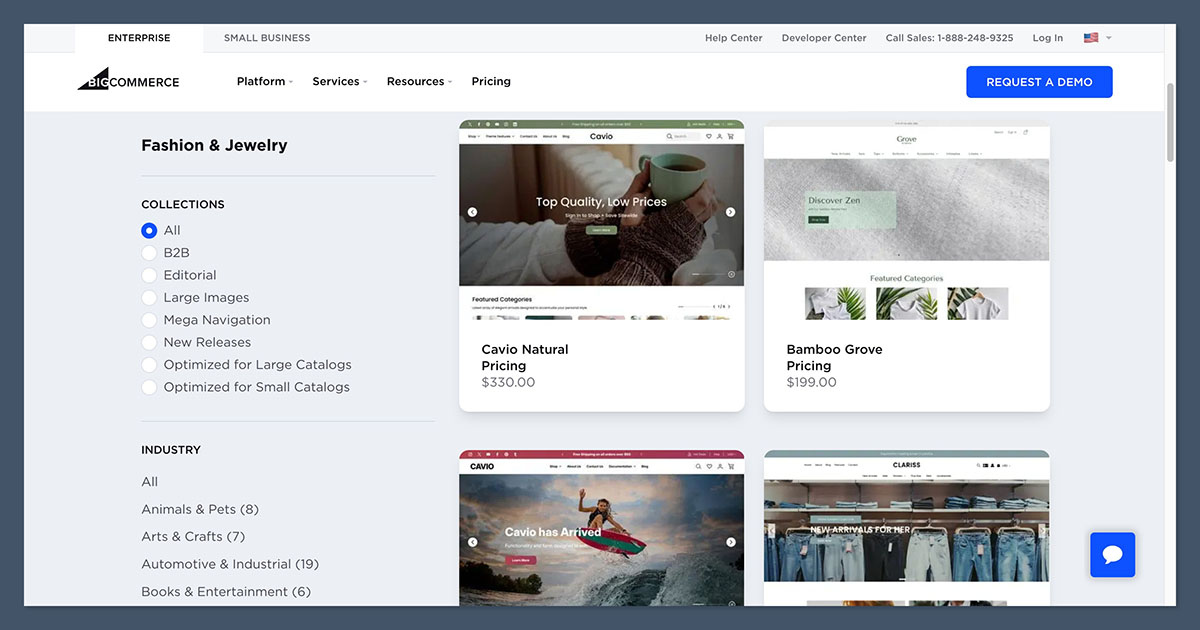Shopify and BigCommerce are two of the most popular ecommerce platforms for running online stores, but if you’re launching an ecommerce or print-on-demand (POD) business, which one gives you the best tools, integrations, and value?
After testing both platforms for real-world POD use cases, I found that Shopify is the more user-friendly, flexible, and scalable solution—especially if you’re just starting out.
That said, BigCommerce has several built-in features that make it a great fit for growing operations that are more SEO-driven.
In this detailed comparison, I’ll break down Shopify vs BigCommerce across all the areas that matter for print-on-demand sellers—including integrations, pricing, SEO, features, design, and ease of use—so you can choose the best platform for your store.
Quick Verdict:
Shopify – Best overall for POD, ideal for beginners and fast scaling
BigCommerce – Best for advanced SEO and stores looking to reduce third-party app reliance
Quick Comparison: Shopify vs BigCommerce for Print-on-Demand
Here’s a side-by-side view of how both platforms stack up on key criteria:
| Feature | Shopify | BigCommerce |
|---|---|---|
| POD Integrations | Excellent (Printful, Printify, etc.) | Good (Printful, Printify) |
| Ease of Use | Beginner-friendly | More complex |
| SEO Features | Basic (needs apps) | Advanced (built-in) |
| Pricing | $39–$399/mo | $39–$399/mo |
| Transaction Fees | Yes (unless using Shopify Payments) | None |
| Templates | 190+ options | 100+ options |
| App Store | 8,000+ apps | ~1,200 apps |
| Multi-Currency Support | With apps | Built-in |
| Best For | Beginners, scaling fast | SEO-focused, enterprise use |
Print-on-Demand App Support
Print-on-demand businesses rely on seamless integrations with suppliers.
Both Shopify and BigCommerce support leading POD services, but Shopify’s ecosystem is better developed.
| POD Platform | Shopify Integration | BigCommerce Integration | Notes |
|---|---|---|---|
| Printful | Native App | Native App | Full functionality on both |
| Printify | Native App | Native App | Shopify offers better dashboard experience |
| Gelato | Native App | Native App | Shopify version is more polished |
| SPOD | Native App | API-based setup only | Easier to manage on Shopify |
| Teelaunch | Native App | Not Available | Shopify exclusive |
Shopify clearly wins here if you want to test multiple suppliers or sell a wide range of customizable products.
One more thing to consider: if you plan to switch POD providers later or experiment with niche products (like custom shoes or eco-friendly apparel), Shopify’s larger integration list gives you more flexibility without needing to rebuild your product catalog or site workflows.
BigCommerce can handle the essentials, but if you’re planning frequent testing or switching between suppliers, Shopify saves time.
Winner: Shopify — better integrations, smoother workflows, and more POD flexibility.
Pricing Comparison
Both Shopify and BigCommerce start at $39 per month, but the total cost of ownership differs when you factor in transaction fees and third-party app requirements. If you’re not tracking these ongoing costs, you could be caught off guard down the road.
Here’s how both platforms compare based on whether you pay monthly or annually.
Shopify Pricing
Shopify’s pricing starts at $29/month when billed annually, with plans scaling up to $299/month for advanced features and lower transaction fees. The limited-time $1/month offer for your first 3 months makes it especially appealing for new sellers testing the platform.
- Basic – $39/month or $29/month when billed annually: 2 staff accounts, 2% transaction fee
- Shopify – $105/month or $79/month when billed annually: 5 staff accounts, 1% fee
- Advanced – $399/month or $299/month when billed annually: 15 staff accounts, 0.5% fee
- 3-day free trial, then $1/month for first 3 months (limited-time promo)
BigCommerce Pricing
BigCommerce’s pricing also ranges from $29 to $299/month on annual billing, but its biggest advantage is zero transaction fees across all plans. While there’s no promotional offer, the 15-day free trial gives you more time to explore everything before committing.
- Standard – $39/month or $29/month when billed annually: Unlimited staff, 0% transaction fees
- Plus – $105/month or $79/month when billed annually: Adds marketing tools and customer groups
- Pro – $399/month or $299/month when billed annually: Designed for high-volume sellers
- 15-day free trial, no credit card required
| Plan Feature | Shopify | BigCommerce |
|---|---|---|
| Entry-Level Plan | $39/mo (monthly) / $29/mo (annually) | $39/mo (monthly) / $29/mo (annually) |
| Mid-Tier Plan | $105/mo (monthly) / $79/mo (annually) | $105/mo (monthly) / $79/mo (annually) |
| High-Tier Plan | $399/mo (monthly) / $299/mo (annually) | $399/mo (monthly) / $299/mo (annually) |
| Staff Accounts | 2 | Unlimited |
| Free Trial | 3 days | 15 days |
| Transaction Fees | 2% (Basic plan) | 0% on all plans |
BigCommerce plans are also better suited for high-volume sellers who want to negotiate better credit card processing rates with gateways like PayPal or Authorize.net.
Shopify’s app costs can creep up over time, especially when scaling marketing, subscriptions, or international features. Paying annually reduces your monthly rate on both platforms, but BigCommerce includes more functionality out of the box.
Shopify’s promotional $1/month for the first 3 months sounds appealing, but the costs can escalate quickly once you’re on the standard pricing tiers, especially if you’re adding apps for SEO, upselling, or shipping features.
BigCommerce, on the other hand, might cost a bit more upfront due to fewer promotions, but includes more tools by default, which means fewer long-term surprises.
Winner: It’s a tie — Shopify has better early offers and native payments, but BigCommerce helps you save long-term with no fees and more included features.
Ease of Use
When testing both platforms, I found Shopify easier to set up, manage, and launch with.

Its intuitive backend and step-by-step checklists make it ideal for beginners.
Shopify:
- Simple onboarding process
- Clear dashboard with step-by-step setup
- Built-in wizard for products, payments, and design
- Clean interface with minimal learning curve
BigCommerce:
- Longer sign-up form
- Fewer visual cues during onboarding
- More technical terminology
- Better for those with experience or developer support
While both platforms use a section-based editor rather than drag-and-drop design, Shopify’s theme editor is easier to understand and customize quickly.
BigCommerce requires more familiarity with ecommerce terminology—like “facets,” “price lists,” or “storefront APIs”—which could slow things down if you’re launching your first POD business.
Shopify’s interface is much more beginner-friendly, offering helpful tooltips and explanations along the way.
Winner: Shopify — smoother learning curve and better for solo founders or small teams starting out.
Sales and Ecommerce Features
Both Shopify and BigCommerce are powerful ecommerce platforms, but they differ in how they deliver those features.
What You Get with Shopify:
- Abandoned cart recovery (on higher plans)
- Shopify POS
- Multi-channel selling (Amazon, TikTok, Instagram)
- AI product descriptions with Shopify Magic
- Shopify Markets for cross-border selling
What You Get with BigCommerce:
- Abandoned cart recovery (from Plus plan)
- Native B2B functionality
- Multi-storefront capabilities
- Product filtering and custom fields
- SEO-friendly category structures
| Feature | Shopify | BigCommerce |
|---|---|---|
| AI Tools | Shopify Magic | BigAI Copywriter |
| Product Filters | App-based | Built-in |
| Multichannel Selling | Yes | Yes |
| Custom Checkout | On Shopify Plus | Built-in |
| Inventory Management | Strong | Strong |
BigCommerce includes more features out of the box, but Shopify is easier to build around with apps if you don’t need everything upfront.
Shopify tends to lead when it comes to ecosystem innovations. For example, new tools like Shopify Magic and deep integrations with TikTok often launch first (or only) on Shopify.
That means you’ll likely have earlier access to marketing and sales tools, which can give you an edge—especially during product launches or seasonal promotions.
Winner: Shopify for customization and app variety, BigCommerce for built-in power.
SEO and Performance
SEO is a long-term game—and this is where BigCommerce has a clear technical advantage.

Shopify SEO:
- Custom meta titles, descriptions
- Auto-generated sitemaps
- Clean structure, but rigid URLs (/products/, /collections/)
- Schema support via apps
- Semrush-powered SEO Booster app
BigCommerce SEO:
- Full control over URLs and permalinks
- Built-in schema markup
- Faster page load speeds without needing apps
- Native image optimization
- AMP support
| SEO Feature | Shopify | BigCommerce |
|---|---|---|
| Custom URLs | Limited | Full control |
| Structured Data | App-based | Built-in |
| Speed Optimization | Via apps | Built-in |
If SEO is a core part of your marketing strategy, BigCommerce gives you more control and fewer limitations.
BigCommerce’s SEO tools are powerful, but they assume you know how to use them. You’ll get better results if you have some background in technical SEO or work with an expert.
Shopify may be more limited technically, but its plugins and simple SEO apps can be easier for beginners to implement with decent results.
Winner: BigCommerce – more control over SEO, faster site performance, and built-in features without relying on third-party apps.
Templates and Design
The look and feel of your store can impact conversions and credibility.
Both platforms offer modern, mobile-optimized themes, but Shopify pulls ahead in selection and user experience.
Shopify Themes:

- 13 free themes
- 190+ premium themes ($100–$500)
- Designed specifically for ecommerce
- Customizable with Shopify’s theme editor
BigCommerce Themes:

- 12 free themes
- 100+ premium themes ($100–$400)
- Good industry variety
- Some themes feel outdated without customization
| Feature | Shopify | BigCommerce |
|---|---|---|
| Free Themes | 13 | 12 |
| Premium Theme Range | $100–$500 | $100–$400 |
| Theme Editor | Intuitive | Moderate complexity |
Shopify’s themes tend to offer better mobile experiences straight out of the box, which is key if most of your POD customers are browsing on their phones.
Mobile responsiveness isn’t just about appearance—it affects speed, conversions, and how Google ranks your site.
Winner: Shopify — better templates, smoother editing, faster design process.
Payment Gateways and Transaction Fees
Shopify:
- 100+ payment methods
- Shopify Payments (lowest fees)
- External gateways come with extra charges
BigCommerce:
- 65+ gateways (PayPal, Stripe, etc.)
- No native gateway, but no transaction fees either
- More flexibility without added costs
| Payment Feature | Shopify | BigCommerce |
|---|---|---|
| Native Gateway | Yes (Shopify Payments) | No |
| Transaction Fees | Yes (0.5%–2%) | None |
| 3rd-Party Support | Excellent | Excellent |
If you’re selling in multiple regions, Shopify Payments might not be available in your country or for your specific business model.
That could push you into using Stripe or PayPal—and then you’re stuck paying transaction fees.
BigCommerce avoids this entirely by not charging any platform fees regardless of the processor you choose.
Another bonus with BigCommerce: you can negotiate better rates directly with payment processors like PayPal or Authorize.net, which is useful as you scale. Shopify locks you into its own rate structure unless you’re on Shopify Plus.
Winner: BigCommerce — no transaction fees across all plans.
Marketing and International Selling
Marketing matters just as much as building your store. Shopify makes it easier to promote your POD brand with built-in tools and integrations.
Shopify:
- Shopify Email for marketing campaigns
- Shopify Marketplace Connect for Amazon, eBay, Etsy
- TikTok, Meta, and Google integrations
- Translated storefronts and Shopify Markets
BigCommerce:
- Promotional banners and automated emails
- Multi-currency and multi-language features
- Marketing tools via third-party apps
Shopify’s Marketplace Connect app is a huge time-saver for POD sellers wanting to sell across multiple platforms.
Instead of managing listings separately on Amazon, Etsy, or eBay, you can centralize everything in your Shopify dashboard.
That kind of efficiency adds up, especially when you’re juggling designs, ads, and fulfillment.
Winner: Shopify — faster to market across multiple channels.
Integrations: Connecting Your Store to the Tools That Matter
Strong integrations are essential when running a print-on-demand business.
Whether it’s automating fulfillment, sending marketing emails, syncing inventory, or analyzing performance, your ecommerce platform needs to play well with the rest of your tool stack.
Shopify and BigCommerce both offer wide integration capabilities, but they approach it differently.
Shopify leads with volume and variety via its expansive app store, while BigCommerce focuses more on including advanced features natively to reduce app reliance.
Shopify Integrations
Shopify’s ecosystem is one of the most robust in ecommerce. With over 8,000 apps in the Shopify App Store, you’ll find plugins for everything from upsells and subscriptions to TikTok Ads, Klaviyo, and 1-click POD setup.
Here’s what stands out:
- Massive third-party app store with vetted integrations
- Direct support for leading POD platforms like Printful, Printify, and Gelato
- Native multichannel integrations: Amazon, Facebook, Instagram, TikTok
- Built-in email marketing with Shopify Email, or use Mailchimp, Omnisend, Klaviyo
- App-based automation via Zapier and Make (formerly Integromat)
- REST and GraphQL APIs for custom builds and workflows
One key trade-off with Shopify: many essential features like upsells, filters, and reviews rely on third-party apps, which often come with monthly fees.
BigCommerce Integrations
BigCommerce offers fewer total apps (about 1,200), but compensates by building more functionality directly into the platform—so you don’t need an app for everything.
Key integration highlights:
- Direct print-on-demand plugins (Printful, Printify, SPOD)
- Native features like customer groups, product filtering, and real-time shipping quotes
- Marketplace selling via Amazon, eBay, and Google Shopping
- Deep integrations with enterprise platforms like Brightpearl, NetSuite, and ShipStation
- Open API structure and flexible developer tools for large-scale integrations
- Built-in support for over 65 payment gateways without extra fees
BigCommerce may be more appealing to stores that want to reduce third-party dependencies and keep monthly costs predictable.
WordPress Integration: Shopify vs BigCommerce
If you’re already using WordPress for blogging, SEO, or landing pages—and you don’t want to migrate your entire site—both Shopify and BigCommerce now offer dedicated WordPress plugins.
Each plugin is designed to integrate commerce into content-focused WordPress sites. But the two take slightly different approaches.
Shopify WordPress Plugin
Shopify recently launched an official WordPress plugin that replaces the old Buy Button embed system with a real native integration.
What it does:
- Lets you insert Shopify products and collections directly into WordPress pages via Gutenberg blocks
- Uses Shopify’s secure, optimized checkout (same as a full Shopify store)
- Handles payments, tax, and compliance automatically
- Offers mobile-first checkout with support for Apple Pay, Google Pay, and PayPal
- Integrates quickly—setup takes less than an hour
Why it matters:
This plugin is ideal for content-first brands that want to keep WordPress for SEO and blog performance while using Shopify’s backend for ecommerce.
Limitations:
- You still need a Shopify subscription (starting at $39/month after trial)
- Full checkout customization requires Shopify Plus
- You manage ecommerce in Shopify and content in WordPress (two dashboards)
- Analytics are split between platforms
Overall, it’s a strong solution for creators, bloggers, or publishers adding ecommerce without the hassle of WooCommerce.
BigCommerce WordPress Plugin
BigCommerce also offers an official WordPress plugin that brings BigCommerce’s product and cart features into WordPress. Unlike Shopify’s plugin, BigCommerce’s integration is built with a headless commerce approach in mind.
What it does:
- Allows you to display BigCommerce products and shopping carts on WordPress pages using shortcodes or blocks
- Keeps all ecommerce data (catalog, orders, customers) in BigCommerce’s backend
- Provides a full-functioning cart and checkout experience embedded in WordPress
- Works with most WordPress themes and page builders
- Built for scalability with decoupled architecture
Why it matters:
BigCommerce’s plugin is best suited for stores that want advanced ecommerce performance with the content control of WordPress—without sacrificing site speed or customization.
Limitations:
- Requires some technical setup for advanced customizations
- Plugin adoption is lower, so fewer community resources exist
- Still involves managing two platforms (like Shopify’s plugin)
The BigCommerce plugin is particularly appealing for developers or agencies building performance-first ecommerce sites on WordPress, especially if they want the benefits of a headless setup without building one from scratch.
Customer Support
Both platforms offer strong support, but Shopify’s Help Center is more detailed, with better onboarding and guidance.
Shopify:
- 24/7 live chat support
- Social media support channels
- Extensive Help Center and tutorials
- Priority support on Shopify Plus
BigCommerce:
- 24/7 phone and chat support
- Community forums and guides
- Priority support on Enterprise plans
Another bonus with Shopify: the community is bigger. You’ll find more how-to videos, forums, third-party tutorials, and support groups across Reddit, YouTube, and Facebook.
If you like solving things yourself without waiting for a support ticket, this kind of user-generated help is a major time-saver.
Winner: Shopify – better overall support options, stronger onboarding, and a more helpful self-serve knowledge base.
Final Verdict: Which Platform Is Better?
After testing both platforms extensively over the years, here’s my recommendation:
Choose Shopify if you’re starting from scratch, want fast and easy integrations with POD tools, and care about scaling with minimal friction.
Choose BigCommerce if you’re experienced, want full control over SEO and backend structure, and want to avoid third-party app reliance and transaction fees.
| Use Case | Recommended Platform |
|---|---|
| New POD Sellers | Shopify |
| Advanced SEO Strategy | BigCommerce |
| Need Fast Setup | Shopify |
| Scaling to Enterprise | BigCommerce |
| Heavy App Use | Shopify |
| Fewer Add-Ons, More Features | BigCommerce |
If you’re still on the fence, try both platforms using their free trials.
Shopify’s quick setup helps you get a feel for integrations and design within a few hours, while BigCommerce’s longer trial lets you explore its backend and built-in tools in more depth.
The better platform is the one that matches how you think and work.
Both are capable of powering a profitable print-on-demand business—you just need to pick the one that makes your day-to-day easier.






